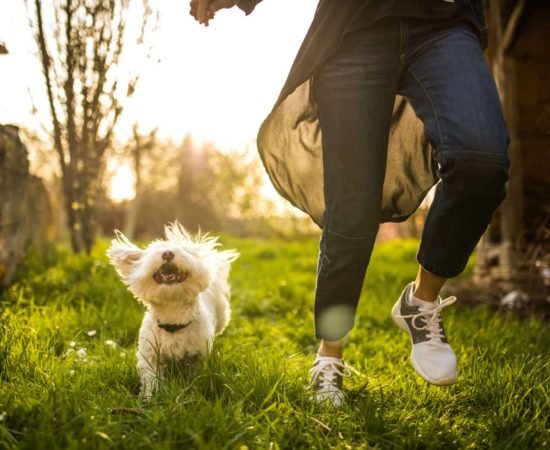Dogs are highly social animals and use a variety of methods to communicate with their human companions. Here are nine common ways dogs communicate with you:
Body Language:
Dogs use their body posture and movements to convey a range of messages. They can express excitement, happiness, fear, aggression, or submission through their body language. For example, a wagging tail often indicates happiness, while a lowered body posture can signal submission or fear.
Barking:
Barking is one of the most recognizable forms of dog communication. Dogs bark to express various emotions such as excitement, warning, fear, or simply to get attention. The pitch, duration, and intensity of the barks can provide additional information about their intent.
Tail Wagging:
A dog’s wagging tail is generally associated with happiness and friendliness. However, the position and speed of the wag can also indicate different emotions. A high, stiff wag may signify alertness or potential aggression, while a low, slow wag could suggest nervousness or uncertainty.
Eye Contact:
Dogs use eye contact to communicate with humans and other dogs. A relaxed, soft gaze usually indicates trust and affection. However, prolonged staring, especially with a fixed or intense gaze, may signal a challenge or potential aggression.
Facial Expressions:
Dogs have a wide range of facial expressions that convey their emotions. They can raise their eyebrows, tilt their heads, display a relaxed or tense mouth, and show their teeth in various ways. Familiarizing yourself with these expressions can help you understand your dog better.
Vocalizations:
Apart from barking, dogs use other vocalizations to communicate. They may whimper, growl, howl, whine, or yelp to express different needs or emotions. Each vocalization has its own unique meaning, and context is crucial in interpreting them.
Licking and Nudging:
Licking and nudging are common ways for dogs to show affection and seek attention. Licking can indicate submission or a desire to establish social bonds, while nudging can be a way of seeking interaction or physical contact.
Pawing:
Dogs may paw at you to get your attention or convey a need. They may paw at their food bowl when they’re hungry, at the door when they want to go outside, or at you when they want to play or be petted. Pay attention to their body language along with pawing to understand their message.
Posture and Movement:
Dogs’ overall posture and movement provide valuable communication cues. A relaxed and loose body indicates comfort, while a stiff and tense body can suggest anxiety or aggression. Additionally, dogs may use specific movements like spinning, jumping, or rolling over to convey their intentions or desires.
Remember that each dog is an individual, and communication styles may vary. It’s essential to spend time observing and understanding your own dog’s unique signals and behavior patterns to foster a stronger bond and effective communication.




